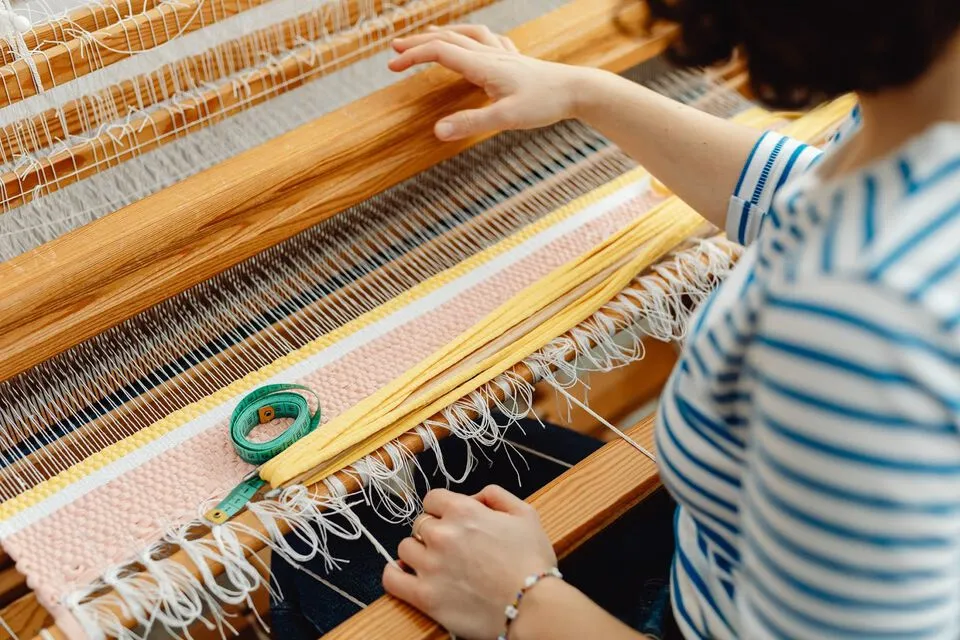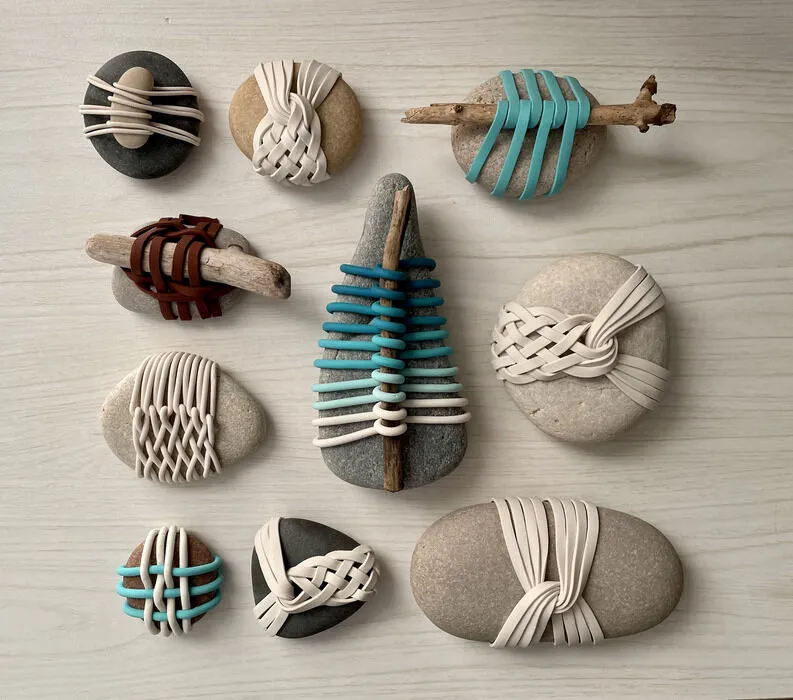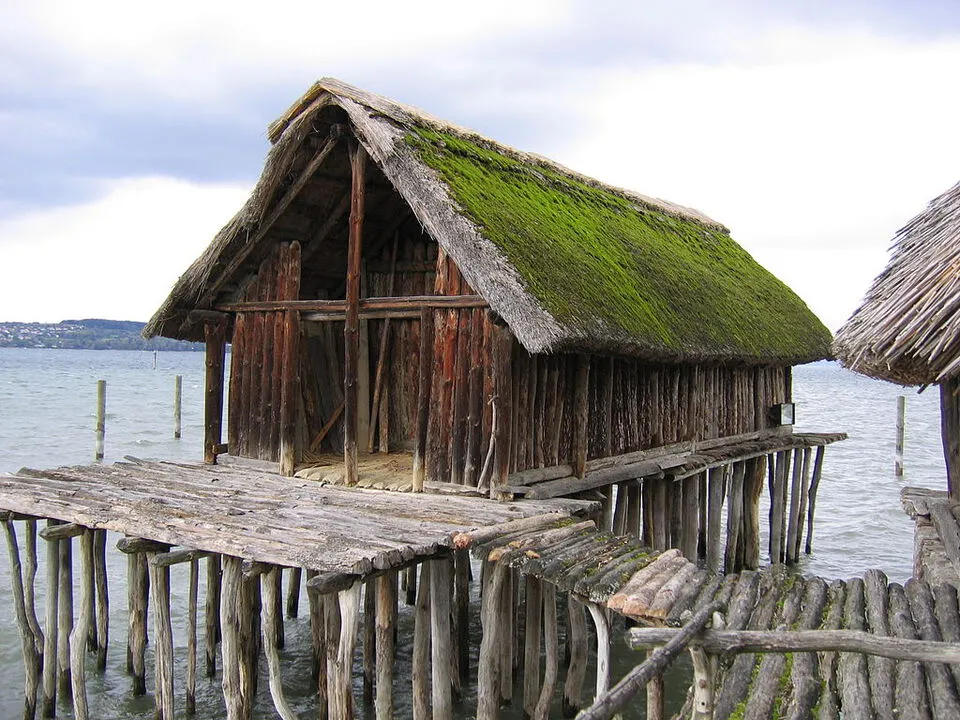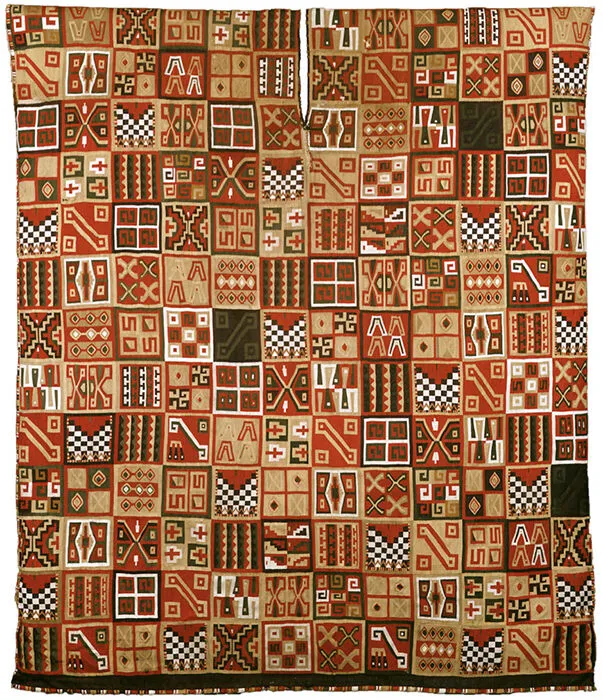The Beautiful History of Weaving
Weaving is one of the oldest and most storied artforms in human history. From Ancient Egypt to Mexico, North America to Persia, even as far back as the stone age, there are documented remnants of the textile industry.

Want to jump right into learning weaving? Check out our art box:

Relief sculptures and ancient writings talk about raising livestock for wool, growing flax (a plant processed to make linen), spinning yarn, and weaving fabric.
As one of the first art forms ever created, weaving is a craft that deserves great respect! Here’s an overview of the rich history of weaving along with some fun facts to inspire you to get out there and create!
What is weaving?

Weaving is the process of intertwining horizontal weft with vertical warp strings on a loom to create a fabric or textile. Traditionally, weaving is done on a shuttle with a loom. However, today with endless durable supplies, artists can turn ordinary objects like books, bicycle wheels, frames, paper plates and even rocks into looms.

Polymer clay woven onto rocks. Learn more

Spokes on a wheel used as warp thread. Artist unknown.
Materials historically used for weaving
While weaving technology can be made from virtually any material, from plastics to metal, the ancients created weavings out of the natural materials of the earth - wool, linen, cotton, and others.
Wool

Grazing sheep
Some believe that wool was the first material to be used for weaving. The process for weaving made of wool begins with raising and herding animals with hair like sheep, alpacas, and llamas. With year round fleece growth, the animals are sheared and the wool processed through a cleaning and brushing system.
Once ready, it is spun into a yarn that can then be woven. Take a peak at this fantastic video made by the Woolmark Company about the modern day production of merino wool. We use merino wool in our needle felting box!
Spinning and weaving wool has been discovered as far back as the stone age. However, the first recorded attempt to improve wool production was around 200 BC, when the Romans crossbred Tarantine ewes with African rams resulting in a heavy white fine wool that was Spanish merino. This new stock was imported to different parts of Europe, eventually landing in England. England became a major center of wool production, especially for Flanders weavers of the Northern Renaissance.

16th century tapestry made by Flemish weavers at the Met Museum. Learn more
Linen

Flax plant pulled by the root and left out to dry.
Linen is a material made from flax, which is a 3 foot tall plant with bright blue flowers that grows abundantly near the black and caspian seas. The filament is separated from the stalk and the remaining tough fiber is wound into string that is used for weaving. For thousands of years, the ancients in Mesopotamia and Egypt cultivated flax to make clothing, banners and draperies. The art of weaving had reached such refinement, distinction, and beauty that one particular mummy was wrapped in linen that had 540 warp strings to the inch! Below, you can take a look at the ancient Egyptian process of growing and weaving with flax.

Step by step production of linen, read from top to bottom.
Cotton

Cotton plant harvest.
Cotton is a small bush-like plant that grows naturally in subtropical regions. It has 3-cleft leaves and white fiber that can be readily spun into string.
Like wool and flax, cotton was spun and woven into clothing in early civilizations. In China and India, during prehistoric times, manufacturing of the plant into fabric was well established. From there, it was later exported to Palestine and Egypt. By 3000 BC, cotton, wool and linen were all used in Ancient Egypt, and the fabric dying process was widespread as well. After Alexander the Great invaded India, cotton was imported to Ancient Rome and was commonly worn by the Roman people and Roman army who found it to be more comfortable than wool.
Swiss Lake Dwellers

Reconstruction of a lake dweller house. Read more
The Lake Dwellers were a people who lived around the Alpine Lakes in Italy and Switzerland between 4300 BC. and 2450 BC. In the winter of 1853-1854, the climate was so dry that the water around the lakes had receded, revealing an entire civilization of villages built on stilts. Through hundreds of excavations in the area, archeologists discovered fabrics made of wool and flax and countless spindle whorls (one of the tools used for spinning yarn). They also found flax in different stages of the textile process - from the unprepared straw all the way to finished plaited and woven fabric. This showed that even by that point in ancient history, Lake Dwellers knew all of the operations of weaving.
North and South America

Inca royal tunic with colors and patterns typical of Inca weavers.
Around the same prehistoric times, weaving in North and South America reached a similar impressive level as that of the East, but completely independently! In Peru, beautiful Inca fabrics with brightly colored patterns were woven on lap looms with cotton or wool yarns. Also found were blankets, sandals, head coverings, and loose clothing. When Pizzaro conquered Peru in the 16th Century, he was quite impressed with Peruvian weavers, which produced work just as beautiful as the artisan craftsmanship from his homeland of Spain.
Blankets and rugs made by Navajo Indians of Arizona and New Mexico are another great example of beautiful and refined weaving work. Made by hand, these weavings were so tightly packed that they were even able to hold water.

O’Sullivan, Timothy H, photographer. Aboriginal life among the Navajoe Indians. Near old Fort Defiance, N.M. / T. H. O’Sullivan, phot. Photograph. Retrieved from the Library of Congress, loc.gov/item/2007684820/.
Advancements in Weaving
As the years passed and our reliance on technology grew, certain devices were developed to make weaving a much faster process. In 1733. John Kay of England invented a process called the flying shuttle. This process made weaving much faster and led to a dramatic increase in production. John Kay’s contribution was an integral part of what would come to be known as the Industrial Revolution.

Flying shuttle used to quickly pass weft yarn through the warp strings.
Later on in the 1800s, the Jacquard Machine came along. This machine made it easier for people to create woven items with more complicated patterns. After the Jacquard Machine, additional devices were developed. The Northrop Loom, for example, came to dominate the industry after the British Northrop Loom Co. Ltd was founded in 1902.

Northrop Loom
The Northrop Loom made weaving more efficient until the demands for material in World War II necessitated additional innovation. The Projectile Loom was introduced after the Northrop Loom. This powerful mechanical loom was developed by the Sulzer brothers. Although the design was created as early as 1924, projectile looms didn’t see commercial use until 1953.

Projectile Weaving Loom
Today, modernized methods like air jet weaving are used to produce woven items and textiles on a massive scale. Weft yarn is pushed through the warp threads by means of air jets instead of a shuttle.
Weaving as a Form of Artistic Expression
Of course, there is something special about weaving hand-crafted items on your own. For one thing, you’ll be able to create custom designs that you can’t find in any conventional store or even online.
Weaving is a way to express yourself and create art that reflects your own personality. Practical uses aside, that is part of what has made weaving such an integral craft throughout human history. It’s been used as a form of artistic and cultural expression for thousands of years. Finally, weaving can be a lot of fun!
Want to read this offline? Feel free to print this post for offline reading!